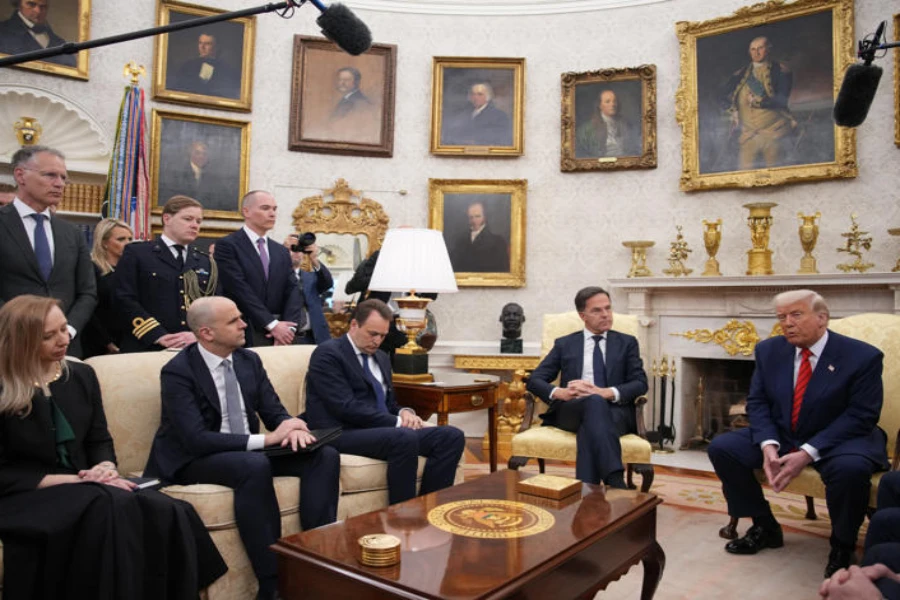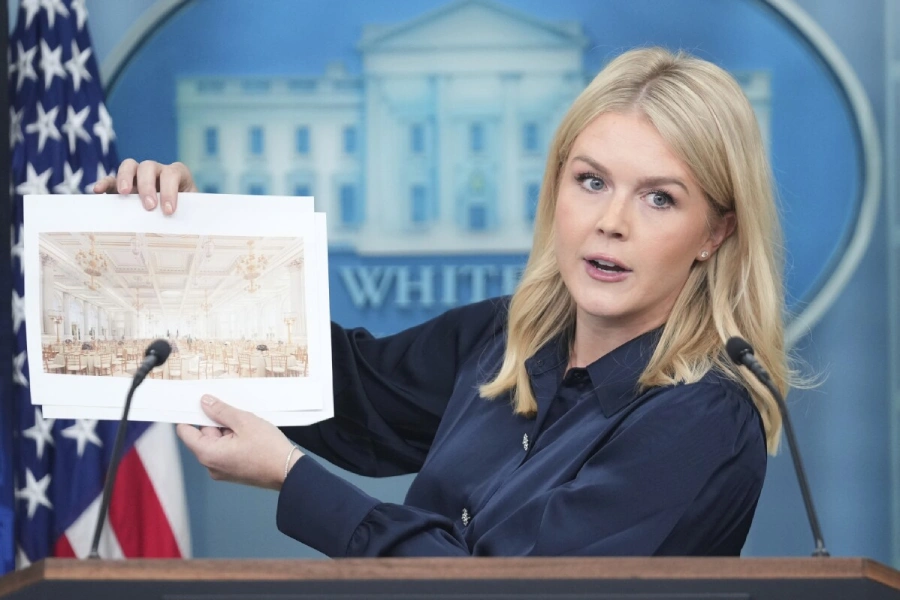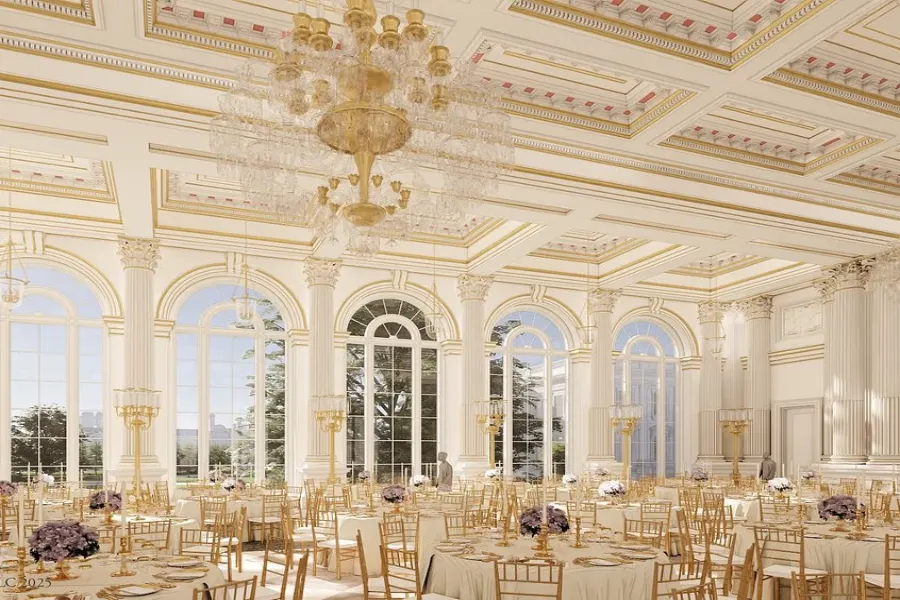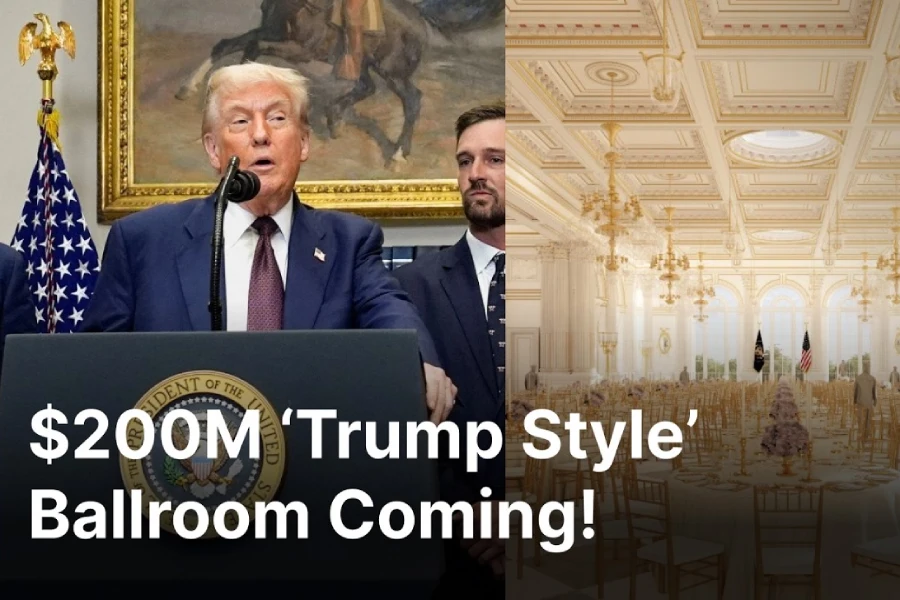In a historic move that’s already generating major buzz across political and architectural circles, Karoline Leavitt, the current White House Press Secretary, has officially announced one of the most ambitious renovations in the history of the executive mansion — the construction of a $200 million White House Ballroom. This project is not only significant in its scale but also in its symbolism. Leavitt has become the face and voice of the initiative, delivering key messages and overseeing how it’s framed for the American public.

Karoline Leavitt: The Voice Behind a Monumental Project
Karoline Leavitt has long been recognized as one of the youngest and most influential conservative figures in American politics. Her articulate communication style and ability to resonate with both political insiders and the general public have made her the perfect spokesperson for this ambitious project.
In multiple press briefings, Leavitt emphasized that the new White House Ballroom is more than just an expansion; it’s a reflection of America’s evolving stature in global diplomacy. According to Leavitt, the 90,000-square-foot ballroom will provide a permanent, elegant venue capable of hosting up to 650 guests — more than triple the East Room’s current capacity.
For decades, administrations have faced logistical challenges during large-scale events. This ballroom is about solving a long-standing issue with grace, beauty, and American craftsmanship, said Karoline Leavitt.
Karoline Leavitt Highlights Presidential Legacy
What sets this initiative apart is its deep-rooted commitment to maintaining the historical and architectural integrity of the White House. Karoline Leavitt made it clear that while the East Wing will be replaced, the new structure will reflect the classic neoclassical design of the main building, preserving the mansion’s historic charm.
The ballroom is to be located where the East Wing currently sits — a space that has seen various modifications since its inception in 1902. This bold transformation marks the first major structural addition to the White House since the Truman Balcony in 1948.

Karoline Leavitt on the Role of Private Donors and Patriotism
One of the unique aspects of this project is its funding. Leavitt revealed that the entire project will be funded through private donations, including significant contributions from President Trump himself and what she termed “patriot donors.” This financing model has sparked considerable discussion.
“This is not taxpayer-funded,” emphasized Karoline Leavitt. “It’s a gift from American patriots to the nation, ensuring that future administrations can host dignitaries and events with the elegance and grandeur they deserve.”

Karoline Leavitt Praises Architectural Team
Leavitt also introduced the key players behind the project:
- McCrery Architects: Renowned for their classical designs, they will lead the architectural planning.
- Clark Construction: Will be in charge of the building process.
- AECOM: Tasked with engineering and infrastructure.
Karoline Leavitt highlighted that this carefully selected team ensures not just excellence in execution, but also respect for the historical significance of the White House.
Karoline Leavitt Outlines Timeline and Security
Construction is set to begin in September 2025, with the goal of completion before the end of Trump’s current term. The United States Secret Service will collaborate closely to ensure all necessary security enhancements are integrated seamlessly into the building’s design.
According to Leavitt, this isn’t just about building a room — it’s about enhancing America’s global image. “A ballroom of this scale allows us to host foreign leaders and national heroes in a space that reflects our nation’s dignity,” she said.
Karoline Leavitt’s Role in Shaping White House Communication Strategy
Beyond the ballroom, Karoline Leavitt is also gaining attention for her broader role in reshaping how the Trump White House communicates with the public. Known for her strategic messaging, she’s turning a construction project into a patriotic narrative — one that resonates with both everyday Americans and elite policymakers.
This ballroom initiative could very well become a defining moment in her career, showcasing her capabilities as a communicator, strategist, and national figure.
Conclusion
The Trump administration is set to build a $200 million, state-of-the-art ballroom at the White House, designed to host large-scale events with elegance and historic charm. Led by Press Secretary Karoline Leavitt, the project is fully funded by private donors, emphasizing patriotism and preserving the White House’s neoclassical style. Scheduled to start in late 2025, this new ballroom will greatly enhance the mansion’s capacity and diplomatic functions, marking the first major expansion in nearly 80 years.
FAQs
1. Who is Karoline Leavitt? Karoline Leavitt is the current White House Press Secretary and a rising star in conservative politics. Known for her eloquence and clarity, she’s been the leading voice behind the White House Ballroom project.
2. What is Karoline Leavitt’s involvement in the new White House Ballroom? Leavitt has served as the project’s primary spokesperson, coordinating communications, press releases, and messaging to ensure the public understands the purpose and impact of the initiative.
3. How much will the White House Ballroom cost? The projected cost is approximately $200 million, entirely funded by private donors, including President Trump and other patriot contributors.
4. When will construction on the White House Ballroom begin? Construction is scheduled to begin in September 2025, with completion expected before the end of President Trump’s current term.
5. Where will the White House Ballroom be built? The ballroom will replace the East Wing of the White House and will be architecturally in harmony with the main building.
6. Why is Karoline Leavitt being credited so prominently in this project? Because of her pivotal role in strategic communication and public engagement, Leavitt has become synonymous with the project. Her consistent visibility in briefings and statements has made her a central figure in the narrative.
7. What makes this ballroom significant? This is the first major structural addition to the White House in nearly 80 years. It increases event capacity and enhances diplomatic hospitality, while maintaining historic integrity.

